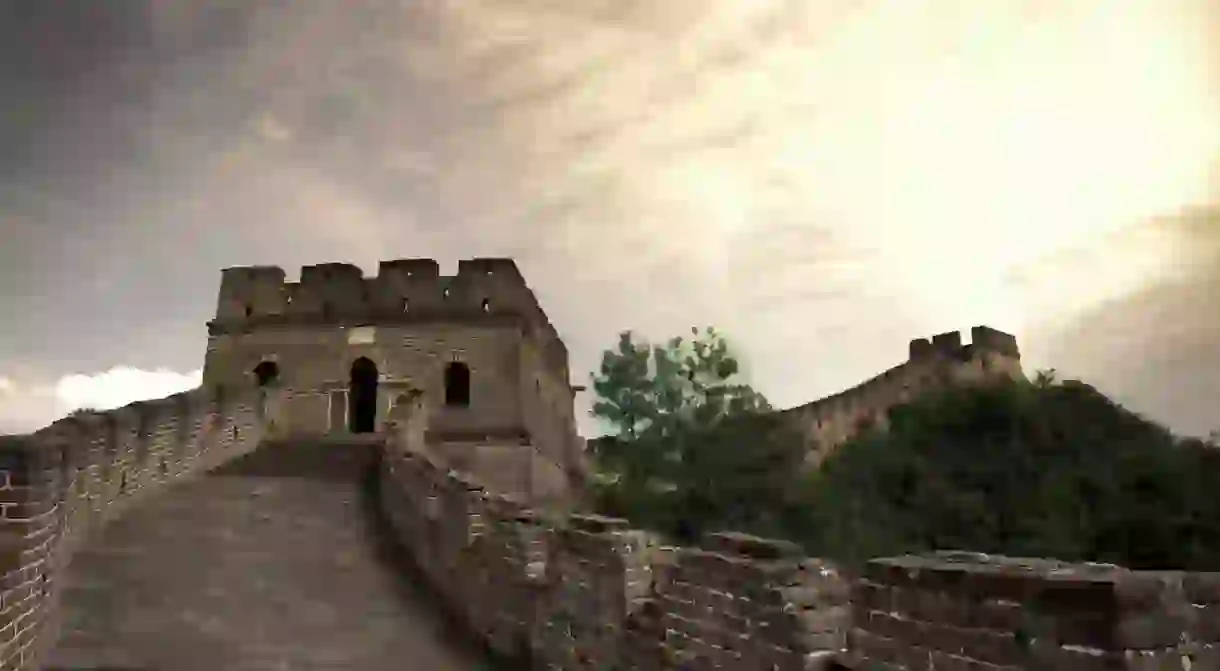A Guide to Exploring the Great Wall of China from Beijing

An essential part of visiting China, and Beijing in particular, is climbing one of the new wonders of the world – the Great Wall. Depending on the time you have available, grab your hiking shoes and start ascending the steps of the past!
The idea of constructing a barrier against barbarian invasion was conceived as early as the 3rd century BC. Centuries later, the fortification was consistently under construction, becoming stronger and more complex. Many parts of the Great Wall are now destroyed and not safe to access, but those open to the public attract crowds from all over the world. Some are easily accessible from central Beijing, but others may require time and patience to get to.
Badaling
Badaling is the closest part of the Great Wall and thus the most visited. It was the first section to be open to tourists after the reconstruction of the Wall in 1957. For travellers limited on time, going to Badaling would be the most efficient way of seeing the Wall. Cable cars run up and down its length to save time and effort in hiking uphill. This section of the Wall is fully restored and very crowded, making the experience not as relaxing as desirable. One possible way of avoiding the crowds is arriving later in the afternoon, but even then it’s a gamble, and time at the area will be limited.

How to get there: Bus 877 leaves from Deshengmen bus station (exit B2, Jishuitan, line 2). Last departure to the wall is at 12:30 and the last bus coming back leaves at 17:00 from Badaling (16:30 November-March). The fare from Deshengmen to Badaling is RMB 12 (1.35 GBP/1.74 USD).
The S2 train leaves Huangtudian station and arrives 15-20 minutes walking distance outside of the scenic area. The train station can be found near Huoying subway station (intersection of line 8 and 13). Keep in mind that tickets can’t be purchased online and seats are not reserved, so the crowd on the platform is likely to be running to the train and if you don’t join them, there may not be any seats left. The fare from Huangtudian to Badaling is RMB 6 (0.67 GBP/0.87 USD).
Mutianyu
Mutianyu is further away than Badaling, but is also fully restored and equipped with cable cars for easy access and a toboggan for a fun descent. It will take around an hour and a half to arrive at Mutianyu, but the crowd won’t be as significant a barrier to enjoying the beautiful scenery.

How to get there: Travelling to Mutianyu involves taking two buses from Dongzhimen bus station (exit E of Dongzhimen subway station, intersection of line 2 and 13). The 916 Express or 916 bus arrives at Huairou Beidajie within an hour or so, where you then transfer to the bus line H23, H24, H35 or H36 towards Mutianyu Roundabout. The total fare, one way, is roughly RMB 20 (2.25 GBP/2.90 USD).
Huanghua Cheng
This section of the Great Wall is not commonly visited by tourists, but appreciated by locals. In this area, the Wall meets the water and is partially submerged, providing a stunning view. This part of the wall is not officially open to the public, and the only guardian of the entrance is an elderly man with a cardboard sign. It is also not restored and not safe to climb in bad weather conditions. Still, the view is stunning and the hike not too challenging.

How to get there: From Dongzhimen bus station (exit E of Dongzhimen subway station, intersection of line 2 and 13), take the 916 Express or 916 bus to Huairou Beidajie. Once there transfer to H21 towards Small West Lake. The total fare, one way, is roughly RMB 20 (2.25 GBP/2.90 USD).
Jiankou
This section of the wall is completely wild and unrestored, which makes for a risky, but exciting hike. Definitely not the best option for inexperienced hikers, as the steps are withering and can be outright dangerous to climb. The section is not officially open to the public and the entrance is controlled by locals. Appropriate footwear and comfortable clothing is recommended.

How to get there: Given the difficulty of the hike and getting to the site, it’s advisable to take an organised tour of Jiankou.
As the famous line from Mao Zedong’s poem states: “He who has never been to the Great Wall is not a true man.” That being said, a foreign traveller should be mindful of how much they are willing to take on. The language barrier can be an issue, so come prepared with print-outs and maps if travelling to parts of the Wall officially closed to the public. Locals are usually happy to help and taxis are available in the case of missing a bus connection (be wary of negotiating the cost though if there is no meter). Finally, climbing the Wall does in fact involve a lot of climbing, so prepare with appropriate clothes and a good water supply.













